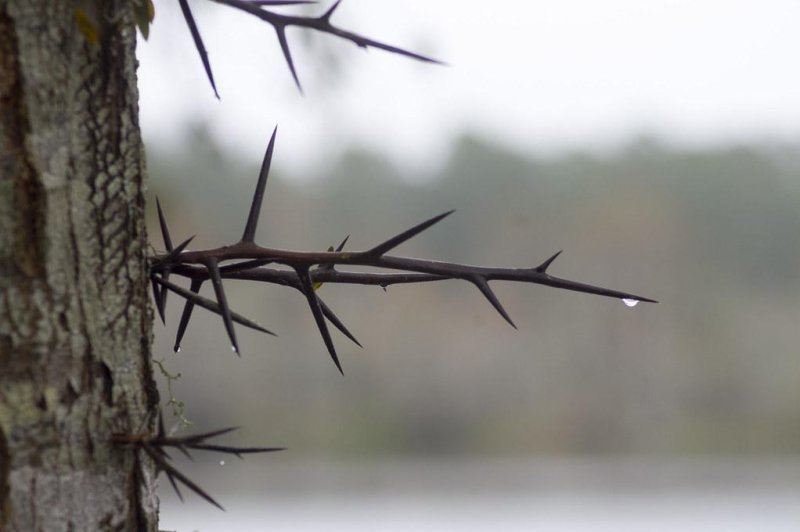Older honey locust trees still sprout dangerous-looking thorns. Photo by ilouque/
Flickr
June 18 (UPI) -- New research has revealed the origins of thorns, the rigid extensions that a variety of plant species use to protect themselves from herbivores.
Not all plant spikes are thorns. The sharp needles found on cacti are called spines, while the spikes adorning rose, raspberry and blackberry bushes are known as prickles. Thorns are unique to plants such as bougainvillea, hawthorn and citrus.
Vivian Irish, professor of ecology and evolutionary biology at Yale University and lead author on the study, published in the journal Current Biology, noticed several especially long thorns protruding from aging honey locust trees along streets in New Haven, Conn., home to Yale's campus.
The majority of honey locusts are thorn-free; growers bred the spikes out of modern lineages. But many older honey locusts still grow the occasional thorn.
Irish is an expert on on stem cells, and as her research revealed, stem cells can help explain the origins of thorns.
Through a series of lab experiments and genetic analysis, Irish and her colleagues determined thorns on citrus plants are built by stem cells. As a new appendage develops, two regulators of stem cell production, TI1 and TI2, smother stem cell activity, causing what might have become a new branch to remain a long, sharp point.
When scientists blocked TI1 and TI2, the citrus tree models produced new branches, but no new thorns.
The discovery could help citrus growers breed trees with fewer dangerous thorns and more fruit-bearing branches.
"We propose that shifts in the timing and function of components of this gene network can account for the evolution of Citrus thorn identity," researchers wrote. "Modulating this pathway can significantly alter plant architecture and could be leveraged to improve crop yields."















